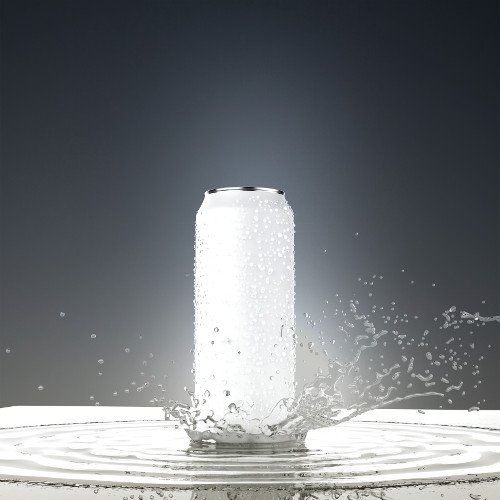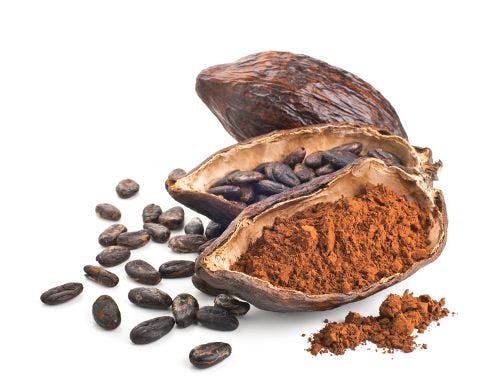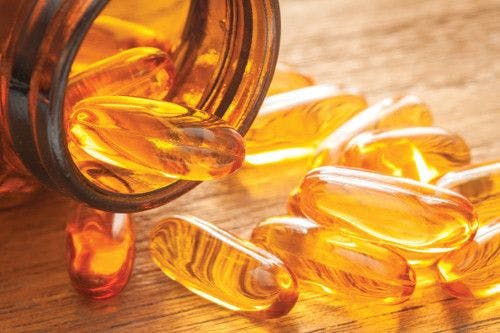Are Energy Drinks in for the Long Haul?
Will a widening audience give energy products staying power?
Photo © Shutterstock.com/archy13

America is running a serious deficit-in energy. And we’re not talking about the fossil-fuel kind, either. Judging by their purchasing habits, the nation’s consumers must be one groggy, discombobulated, not-particularly-motivated lot, because they’re rushing to energy-boosting products, from shakes and shots to pills, powders, and packaged snacks, for the vigor they lack and the sharper focus, improved performance-even that long-lost “youthful glow”-they crave.
This is a marked departure from the past, when energy was the province primarily of powerlifters and partygoers. But according to a 2015 Mintel (Chicago) report, energy’s core consumers, at least in the beverage space, may well be parents and maturing Millennials on the verge of parenthood. Which, on one hand, should come as little surprise, as toddler-chasing is an energy-intensive enterprise; not for nothing did Mintel find significantly higher rates of energy drink and shot consumption-58% and 48%, respectively-in households with children compared to those without (27% and 18%, respectively).
On the other hand, energy products-and energy drinks in particular-have caught flack not just for outrageous and unsubstantiated claims, but for the genuine health and safety threats that can accompany their irresponsible or excessive use.
So some wonder if the energy market can sustain its appeal amongst its expanding audience. As Michael Crabtree, technical sales manager, Bioenergy Life Sciences Inc. (Ham Lake, MN), says, “The energy market without doubt is one of the most critical markets in the dietary supplement industry, and consumers want options that meet their needs.” But with any energy product, he says, the “main point” remains the safe and efficient delivery of energy-boosting ingredients-“which always plays well with the consumer.”
Firing on All Cylinders
Energy really is a major driver for the supplement industry writ large. According to a 2015 BCC Research report, the global market for sports nutrition and high-energy supplements hit $37.5 billion in 2014 and looks set to approach $66.0 billion by 2020, holding its compound annual growth rate (CAGR) at 10.1% through the end of this decade. What’s more, the Council for Responsible Nutrition’s (CRN; Washington, DC) latest Consumer Survey on Dietary Supplements revealed a first last year: the desire for energy clinched the number-two spot among consumers’ motivations for taking supplements in the first place, pulling ahead of their need to fill nutrient gaps.
This checks out with Chase Hagerman, brand director, Chemi Nutra (Austin, TX), who believes that energy “is a very easy functional category to sell, the main reason being that it’s perhaps the most tangible function that’s offered. It’s well known that in today’s hectic, always-connecting world, too many of us are overworked and under-rested. A natural solution to coping is to ramp up the energy.”
Those weary consumers’ concept of “energy” is broadening, stretching beyond the capacity to do physical work to encompass mental stamina, too-which is just as liable to flag under stress as is its bodily counterpart. As Karen Hecht, PhD, technical marketing specialist, AstaReal Inc. (Bellevue, WA), notes, “We draw on our reservoirs of energy for both physical and mental tasks that require concentration and coordination.” When our reservoirs run low, “we feel a lack of motivation, a mental fog, and body heaviness.” And who has time for that?
New Patrons
Fewer of us than ever. Which explains why today’s market for energy is so diverse. “The ‘new’ energy consumer runs the gamut from parents trying to keep up with their kids to weekend warriors seeking a boost at the gym to seniors looking to remain active,” says Jeff Lind, vice president, sales and marketing, Natreon Inc. (New Brunswick, NJ).
But energy’s real engine is the Millennial generation, particularly its older members. “The truth is, Millennials have always been, and still are, the dominant consumers in the energy category,” says Brian Zapp, director of marketing, Applied Foods Sciences Inc. (Austin, TX). Citing Mintel data, he notes that 67% of males and 47% of females between 18 and 34 consume energy drinks, making them “by far the largest consumer base.”
Factors speaking to this generation include “building trust, telling your story, and turning them into true believers,” Zapp continues, adding that Millennials “care about things like sustainability, while taking pride in choosing natural and organic” products. That push has spurred a boom in new energy platforms that aren’t just “cleaner,” but are more appealing and easier to use, as well.
New Platforms
Indeed, says Crabtree, “Energy is a huge driver on the consumer side, so-correspondingly-it’s a huge driver on the innovation side.” Though beverages and traditional oral supplements remain the “dominant delivery methods,” he says, “with the recent scrutiny attached to stimulant-based energy drinks due to the adverse effects historically associated with them, alternative delivery methods are seeing more traffic.” Those beverages-along with energy bars-may “always be staples,” he notes, “but a market reorientation is inevitable.”
Where that reorientation takes product development is the next question. As far as Zapp is concerned, “Some interesting and exciting newer delivery systems we’ve seen are stir sticks and straws, lick strips, mints, and even chocolate chews.” He’s keeping his eye on the tech space, too, where emerging formats let consumers “customize their energy input through smart bottles and other proprietary technology.”
“One application I’m particularly fond of,” notes Hagerman, “is gummies.” So fond is he that his company partnered with a gummy maker to produce a line formulated with Chemi Nutra’s AlphaSize alpha-glyceryl phosphoryl choline (A-GPC). Popular as a sports-nutrition pre-workout energizer, the ingredient has a mode of action that’s “pretty easy to understand,” Hagerman says. A-GPC increases the production of the neurotransmitter acetylcholine, which is involved in the “mind-to-muscle” connection between the central and peripheral nervous systems-or, as Hagerman says, “Just think of it like caffeinating the neurons.” He believes gummies are the “ideal delivery mechanism” for the ingredient’s flavorless profile, and likes that they “provide a fun sensory experience with myriad flavors and mouthfeels, yet are also compact, portable, and ready to consume.”
Just as convenient are Essential Mints, from VitaThinQ Inc. (Davie, FL). As Donald M. Choi, the company’s president and founder, describes it, the product is a traditional mint, plus caffeine. Neither concept nor ingredient is new, but “the combination of the two makes this a unique caffeine resource,” he says. In cases where a full energy shot supplies too much caffeine-or is literally too much for the consumer to swallow-the mints’ “elegant delivery” allows the supplement to slip right into the bloodstream “through highly vascularized oral tissues,” he explains. The mint format also gives consumers dose control: each Energizing Peppermint contains 20 mg of caffeine, Choi says, making five equivalent to a single cup of coffee. Put another way, one tin, with 1,600 mg of caffeine (not recommended for consuming in one sitting, of course), equals 16 cups of coffee, eight 5-Hour Energy shots, 10 Monster drinks, or 46 cans of Coca-Cola.
Energy at the Source
You needn’t be a public-health advocate or energy-drink scold to find the very thought of drinking 10 Monsters or 46 Cokes alarming. And, increasingly, energy consumers themselves are avoiding “artificial” products with sketchy reputations. As Crabtree says, “The target market continues to expand into all-natural, non-stimulatory ingredients and functional markets, where consumers are looking for everyday energy that’s sustainable-not just performance-enhancing.”
First, we need to define what sustainable energy is from a metabolic standpoint. As Hagerman says, “Energy, in strict nutritional terms, is calories.” Alas, for a population that’s not just overworked and under stress but locked in a continual battle against overweight and obesity, a focus on caloric energy-which most of us get enough of already-may be misguided.
Besides, not all calories are created equal. “Some energy sources burn fast and leave you feeling exhausted,” Hecht says. “Similarly, sugar is a quick energy source-but spikes and crashes in blood sugar can contribute to fatigue and aren’t a good source of sustained energy.”
So if sugar is out as an energy source, what’s next? “Scientifically,” Bioenergy’s Crabtree says, “we quantify biological energy as the amount of adenosine triphosphate-ATP-available to drive biochemical processes.” Though the body contains roughly 250 grams of ATP at any given moment, he notes, it turns over close to its own weight in ATP every day. ATP comprises several constituent compounds, including organic phosphate, adenine, and D-ribose; thus, as such compounds “make a direct impact on the levels of energy available to the body,” he concludes, “D-ribose, the source of all our cellular energy, is the perfect ingredient solution to consider for this market.”
Clean Caffeine
Then again, how scientists, or even our own cells, define energy may not be critically important because most consumers understand what energy implies, Hagerman says-namely, “something that provides mental focus, alertness, the ability to stay awake, and improved physical performance.” And for many, that something is caffeine.
For students stuck “juggling academic responsibilities and social relationships,” VitaThinQ’s Choi says, “caffeine and college go hand-in-hand.” Once those students graduate and enter the working world, they also “rely on caffeine to work longer hours and achieve the success they’re striving for.” And in addition to these two groups, “we see a unique segment of caffeine consumers in gamers who play video games online for entertainment and even money,” Choi continues.
These constituencies don’t necessarily want the same effect from their caffeine, nor do they necessarily want it from the same source. But “from an ingredient-supply standpoint,” Zapp says, “organic and natural energy sources-especially organic caffeine-are occupying a majority of new business growth.”
He sees this at his own company, Applied Foods Sciences, where most brand marketers “simply want a naturally derived alternative to artificial caffeine.” The company’s solution: two organic and “natural” caffeine sources standardized to more than 90% caffeine, one based on coffee and the other on tea. “These ingredients are highly water soluble, clear in solution, and designed to have a more neutral flavor profile,” Zapp says, with less of the bitterness, astringency, and “chalky” drying effect often associated with caffeine.
Beyond these sources, Zapp thinks the most exciting ingredient in the clean-caffeine field is guayusa, from the leaf of a holly tree (Ilex guayusa) that grows only in the upper Amazon. A cousin of yerba mate, guayusa is “uniquely different” from other caffeine sources in that it has a polyphenolic profile all its own and a sweet, not bitter, taste, says Zapp. Consumers experience its effect “as a bright and clear energy,” he adds, and his company sees it “meeting the growing demand for functional energy and cognitive health products geared toward modern working consumers seeking a calmer nervous system and less agitation to go with alert mental or physical energy.”
Moving Forward: Trust Us
Nothing could be further from cardiac failures and even deaths that provoked an “onslaught of negative media” when they’ve struck consumers who’ve misused energy products in the past, Hagerman says. However, “It’s very important to note that such adverse events seldom occur,” he says. He cites evidence from SafetyCall International (Bloomington, MN) that a total of 27 adverse event cases associated with energy drinks were reported from 2008 to 2012. “Yet when they looked at the soft drinks/ water category,” Hagerman continues, “it dwarfed energy by comparison, at 885 cases reported.”
But the negative association’s stuck, and energy products can continue to carry its burden as a result. Cleaning up the sector’s reputation will require credibility. A 2015 Mintel survey of 168 Internet users aged 18 and above who consume energy drinks found that more than one-quarter claim to drink less because they “don’t trust the artificial ingredients inside,” Zapp notes. By replacing these “synthetic and unrecognizable ingredients with known sources,” he believes, “consumers can more easily draw a connection of familiarity.”
Natreon’s Lind points to science as “the key to reestablishing credibility” and providing support for claims. Companies in the game for the long haul “would be best served by doing clinical studies on the actual finished product,” he suggests, “creating proprietary science and possibly some IP protection” to boot.
And make sure the product works. “As with every segment of the supplement industry, success comes from providing an efficacious product,” he says. “If the product works, customers will continue to buy it.”
Also read:
Natural Ingredients for Energy Dietary Supplements
Energy Drink Trends: Less Sugar, Clean Label, Natural, and More
Energy Drink Makers Turn to Natural Botanical Ingredients

Prinova acquires Aplinova to further increase its footprint in Latin America
April 7th 2025Prinova has recently announced the acquisition of Brazilian ingredients distributor Aplinova, which is a provider of specialty ingredients for a range of market segments that include food, beverage, supplements, and personal care.






















